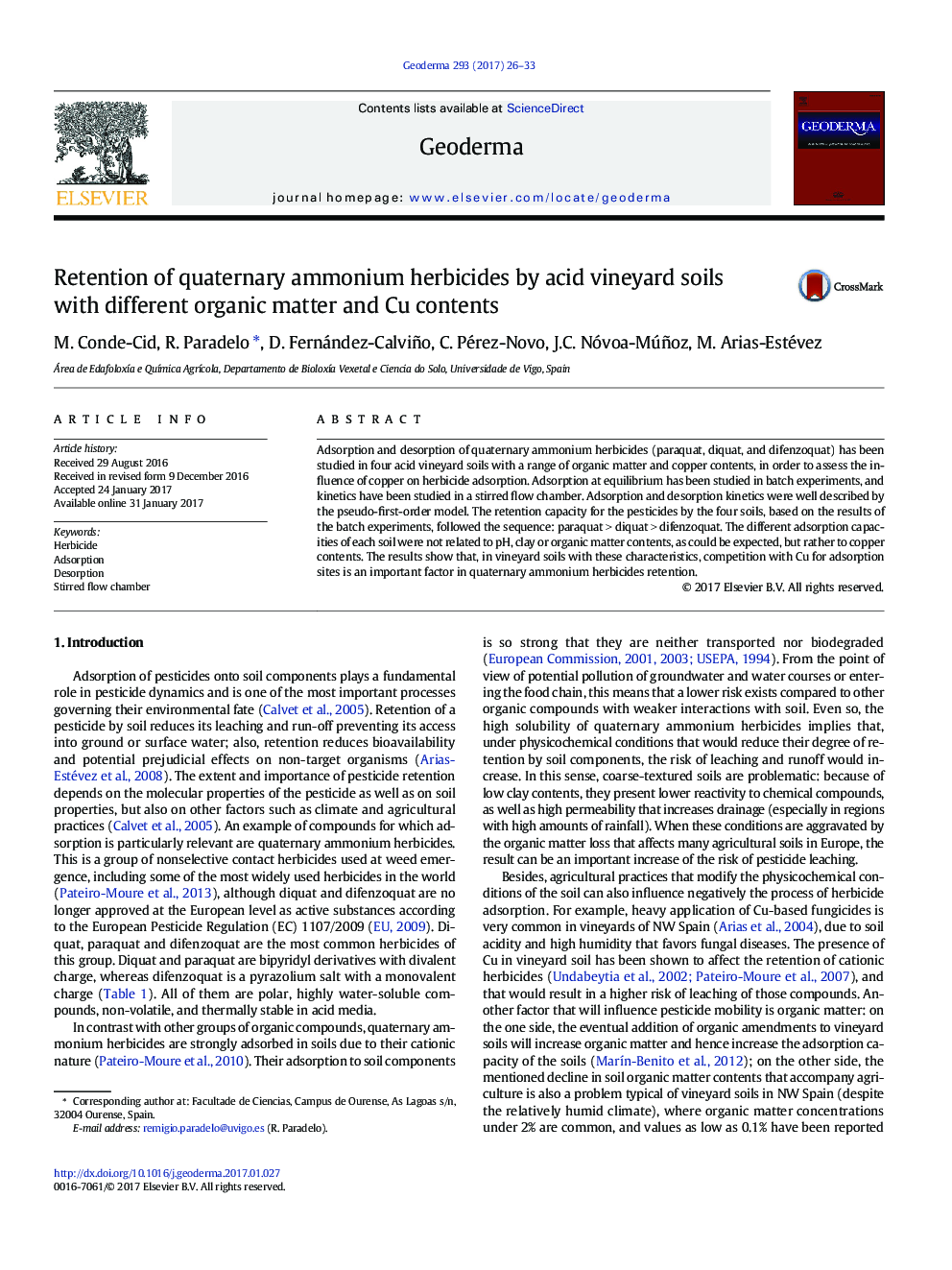| Article ID | Journal | Published Year | Pages | File Type |
|---|---|---|---|---|
| 5770399 | Geoderma | 2017 | 8 Pages |
â¢Adsorption and desorption of quaternary ammonium herbicides were studied in four soils.â¢Batch and stirred-flow chamber experiments were used for the study.â¢Retention capacity by the soils followed the sequence paraquat > diquat > difenzoquat.â¢The adsorption capacity of the soils was not related to pH, clay or organic matter.â¢Competition with copper for adsorption sites is an important factor in retention.
Adsorption and desorption of quaternary ammonium herbicides (paraquat, diquat, and difenzoquat) has been studied in four acid vineyard soils with a range of organic matter and copper contents, in order to assess the influence of copper on herbicide adsorption. Adsorption at equilibrium has been studied in batch experiments, and kinetics have been studied in a stirred flow chamber. Adsorption and desorption kinetics were well described by the pseudo-first-order model. The retention capacity for the pesticides by the four soils, based on the results of the batch experiments, followed the sequence: paraquat > diquat > difenzoquat. The different adsorption capacities of each soil were not related to pH, clay or organic matter contents, as could be expected, but rather to copper contents. The results show that, in vineyard soils with these characteristics, competition with Cu for adsorption sites is an important factor in quaternary ammonium herbicides retention.
Graphical abstractDownload high-res image (71KB)Download full-size image
